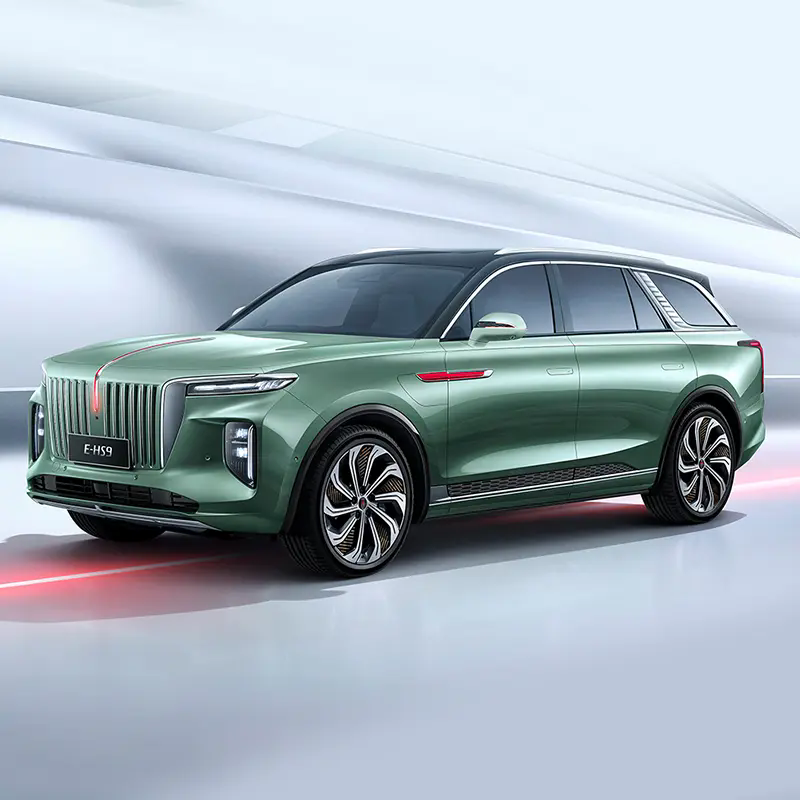The Rise of New Energy Vehicles: Transforming the Future of Transportation
2024-12-04
In recent years, New Energy Vehicles (NEVs) have emerged as a revolutionary force in the automotive industry, transforming the way we think about transportation and sustainability. As concerns over climate change, air pollution, and the depletion of fossil fuels intensify, NEVs offer a promising solution that not only reduces the environmental impact of driving but also reshapes the future of mobility. This blog explores what NEVs are, why they are important, and how they are driving change in the world of transportation.
What Are New Energy Vehicles (NEVs)?
New Energy Vehicles (NEVs) are vehicles powered by alternative energy sources, designed to minimize reliance on traditional internal combustion engines that run on gasoline or diesel. NEVs typically include electric vehicles (EVs), hybrid vehicles (HEVs), plug-in hybrid vehicles (PHEVs), and hydrogen fuel cell vehicles (FCVs). These vehicles rely on electricity, hydrogen, or other sustainable sources of power rather than fossil fuels, contributing to the reduction of harmful emissions and the dependence on non-renewable resources.
Why Are NEVs Important?
1. Environmental Benefits
The most significant advantage of NEVs is their positive impact on the environment. Traditional gasoline-powered vehicles emit carbon dioxide (CO2) and other harmful pollutants that contribute to global warming and poor air quality. In contrast, electric vehicles (EVs) and hydrogen-powered vehicles produce little to no emissions, helping to mitigate climate change and improve urban air quality. By adopting NEVs on a large scale, we can significantly reduce the transportation sector's carbon footprint, which is a major contributor to global greenhouse gas emissions.
2. Reducing Fossil Fuel Dependence
The world's reliance on fossil fuels for transportation is unsustainable and contributes to the depletion of non-renewable resources. NEVs help reduce this dependence by utilizing renewable energy sources such as electricity from solar or wind power, or hydrogen derived from water. This shift not only conserves fossil fuels but also enhances energy security by diversifying energy sources.
3. Economic Opportunities
As the demand for NEVs grows, so do the economic opportunities within the green technology sector. The production, sale, and maintenance of NEVs create jobs in manufacturing, research and development, and infrastructure, such as charging stations and hydrogen refueling facilities. By embracing NEVs, governments and businesses can stimulate innovation and investment in sustainable technologies, fostering new industries and boosting economic growth.
4. Energy Efficiency and Cost Savings
New Energy Vehicles are generally more energy-efficient than traditional vehicles. For example, electric vehicles convert a higher percentage of energy from their batteries into motion, while internal combustion engines waste a significant amount of energy as heat. Additionally, the cost of charging an electric vehicle or fueling a hydrogen car is typically lower than gasoline or diesel, leading to long-term savings for drivers. As the technology advances, NEVs are also expected to become more affordable, further enhancing their appeal to consumers.
Types of New Energy Vehicles
1. Electric Vehicles (EVs)
Electric vehicles are powered entirely by electricity stored in batteries. They are one of the most popular types of NEVs due to their zero tailpipe emissions, reduced operating costs, and the growing availability of charging infrastructure. The range of EVs has improved significantly in recent years, with many models now offering enough range to meet the needs of daily commuting and long-distance travel. With major automakers and governments making significant investments in electric vehicle technology, EVs are rapidly becoming more mainstream.
2. Hybrid Electric Vehicles (HEVs)
Hybrid electric vehicles combine an internal combustion engine with an electric motor, using both energy sources to power the vehicle. HEVs don’t require charging and automatically switch between the gas engine and the electric motor depending on driving conditions. This hybrid approach offers the benefits of fuel efficiency and reduced emissions without the need for charging infrastructure, making them a convenient option for those who want to transition to greener transportation without completely abandoning traditional fuel sources.
3. Plug-in Hybrid Electric Vehicles (PHEVs)
Plug-in hybrid electric vehicles offer the best of both worlds. These vehicles combine the benefits of an electric motor and a gasoline engine, but unlike traditional hybrids, they can be plugged in to recharge their batteries. PHEVs can typically travel shorter distances on electric power alone, but when the battery runs out, the vehicle switches to its gasoline engine, offering flexibility and extending driving range. PHEVs are ideal for consumers who want to reduce their fuel consumption but still need the backup of a gasoline engine for longer trips.
4. Hydrogen Fuel Cell Vehicles (FCVs)
Hydrogen fuel cell vehicles are powered by hydrogen gas, which reacts with oxygen in a fuel cell to generate electricity that powers an electric motor. The only byproduct of this process is water vapor, making FCVs one of the cleanest forms of transportation. While hydrogen infrastructure is still developing, hydrogen-powered cars offer long driving ranges and fast refueling times, making them an attractive option for the future of transportation. The potential for hydrogen as a clean energy source is immense, especially in sectors like heavy-duty transport.
The Future of New Energy Vehicles
The future of NEVs looks bright, with significant advancements on the horizon. Governments around the world are implementing stricter emission standards, offering incentives for NEV adoption, and investing in infrastructure to support these vehicles. Automakers are also ramping up their efforts to produce a wider variety of NEVs, from affordable compact cars to luxury electric SUVs and hydrogen trucks.
Moreover, breakthroughs in battery technology, charging speed, and hydrogen production methods are expected to address current limitations, such as range anxiety, long charging times, and the availability of hydrogen refueling stations. As NEVs become more affordable, accessible, and efficient, they will continue to play a crucial role in the transition toward a cleaner, more sustainable transportation system.
Conclusion
New Energy Vehicles are more than just a trend—they represent a paradigm shift in how we approach transportation. By reducing emissions, conserving resources, and providing economic opportunities, NEVs are a key part of the solution to the global challenges we face. As technology advances and consumer awareness grows, NEVs are poised to become the dominant mode of transportation, ushering in a greener and more sustainable future for generations to come. Embracing NEVs not only helps protect the planet but also offers individuals and businesses an opportunity to be part of a transformative movement in the automotive industry.



